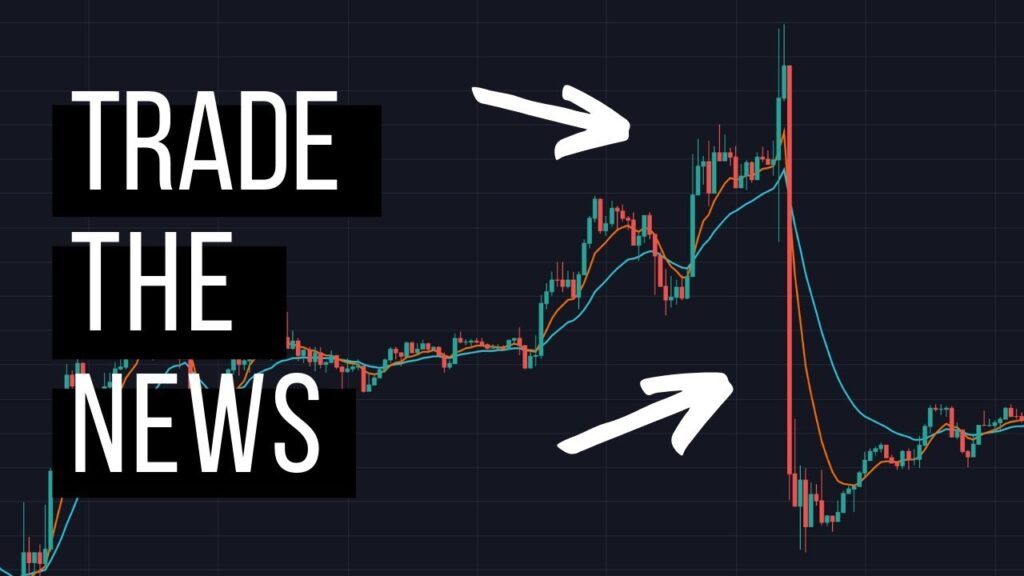
Amid the coronavirus third wave resurgence, negative sentiments dominated forex analysis and trading of g7 currencies. While the US treasury yields took a breather this week, Suez canal blockage caused mayhem to the international supply chain, causing massive losses.
At a glance, the greenback emerged as the week’s best performer, followed by the Canadian Dollar, while Aussie and Kiwi were the worst performers. While the economic data fuelled positive sentiments, the coronavirus pandemic continued to block the light at the end of the tunnel for the Eurozone’s economic recovery.
The Fundamentals Affected Forex Market Analysis And Trading

Suez Canal Blockage Canal
A 400-meter long mega vessel got stuck in the Suez canal– a vital waterway – on Tuesday, imparting trade between Asia and Europe. It caused double shipping rates and disrupted the global supply chain, causing billions of dollars in losses.
Dredging and tugging efforts to free the vessel failed by the close of the week. An alternative route around Africa is costly and lengthy, taking up to 3 weeks.
COVID 19 News
Amid the continuing coronavirus rollout, the US, Asia, and Europe recorded increased coronavirus new cases. The increase significantly imparted forex analysis and trading over the week and downplayed global economic recovery efforts.
On Thursday, President Joe Biden made an ambitious promise to deliver 200 million covid 19 vaccine doses in 100 days. This came after the president achieved 100 million doses in 100 days on Friday on the 59th day in office, averaging 2.5 million doses daily.
AstraZeneca woes continued over the week. The EU blamed AstraZeneca amid tension with the UK over the export ban.
USD Vs Crude Oil
According to investing.com, crude oil lost 0.73% to close the week at 60.97. The increasing covid 19 new cases and the lockdown measures affected usd vs crude oil performance over the week. And towards the end of the week, the Suez canal blockage caused crude oil prices to bounce back.
Geopolitics
On Thursday, North Korea launched missiles into the sea closer to Japan, coinciding with Tokyo’s Olympic torch. The missile launch worsened the US-North Korea denuclearization diplomatic row under President Joe Biden.
Early in the week, the EU imposed sanctions on four Chinese officials on Xinjiang human rights abuses. In retaliation, China reacted with its sanctions against the EU.
G7 Economic Review And Performance
Table: g7 performance summary
| Currency pair | 22nd March | 28th March | Average | Percentage change | Remarks |
| USD | 91.741 | 92.797 | 92.503 | 0.949 | increase |
| EUR/USD | 1.1931 | 1.1788 | 1.1818 | 0.9871 | drop |
| GBP/USD | 1.3863 | 1.3791 | 1.3770 | 0.6129 | drop |
| USD/CHF | 0.9230 | 0.9391 | 0.9351 | 1.0708 | increase |
| USD/JPY | 108.83 | 109.79 | 109.20 | 0.74 | increase |
| USD/CAD | 1.2520 | 1.2585 | 1.2577 | 0.7322 | increase |
| AUD/USD | 0.7744 | 0.7637 | 0.7633 | 1.3950 | drop |
| NZD/USD | 0.7162 | 0.7000 | 0.7009 | 2.4012 | drop |
USD Currency On The Winning Lane
In the last week of March, the Dollar rallied by 0.92% to 92.766, marking a second consecutive weekly gain. In the previous week, it had risen by 0.26%.
On the Economic calendar, the Prelim private sector PMI was Dollar positive with the service sector rising from 59.8 to 60.0. and the Manufacturing Index increased from 58.6 to 59.0.
Towards the end of the week, weekly jobless claims figures fell from 781k to 684k – reflecting improvement in the labor market. On the negative trend were core durable goods orders, personal spending, and inflationary pressure.
Core, durable goods orders dropped by 0.9% while personal spending slid by 1%. Other economic statistics had a muted effect on the forex analysis and trading of the Dollar.
FED Chair Jerome Powell’s sentiments uplifted the Dollar towards the end of the week on the fiscal policy front.
GBP/USD
In the UK, it was also busy on the economic calendar. Employment figures delivered mixed results for the sterling pound. While the unemployment rate dropped to 5.0% from 5.1%, claimant claims uptick by 86.6K.
Mid-week, inflation figures disappointed, easing from 0.7% to 0.4%, but private sector PMI figures uplifted the Pound. The manufacturing PMI hit 57.9 from 55.1, and service PMI rose to 56.8 from 49.5.
Better than earlier projection, retail sales figures also leveraged the Pound, increasing by 2.4%. In the last week of March, the sterling pound slumped by 0.60%, closing the week at 1.3789 against the Dollar. Previously the Pound had also slumped by 0.37% to 1.3872.
Britain legislators voted to extend COVID 19 containment laws for another six months. And as hospitalization levels reduced, Britain lowered the coronavirus emergency incidence level from level 4 to 3.
EUR USD Market
In the Eurozone, the economic calendar was full and busy throughout the week.
Private sector PMIs, and consumer and business sentiment figures supported the euro. The service PMI rose from 45.7 to 48.8, the highest in the last seven months, with Manufacturing PMI increased to a record high of 62.4 from 57.9 – better than an earlier 57.7 projection.
While the economic statistics were positive in forex analysis and trading in the eur usd market, a spike in new coronavirus cases pressured the Eurozone’s currency. And the reintroduction of containment measures in some Eurozone member states tainted its economic outlook.
The ECB’s Economic bulletin also impacted the performance of the euro. It highlighted economic recovery risks. Of particular concern echoed in the bulletin include coronavirus new cases, slow vaccination rate, and lockdown measures, which correspond with the spiking of new coronavirus cases across the bloc.
By the end of the week, the euro slid by 0.92% to 1.1794. In the previous week, the euro had also fallen by 0.41%.
Franc to Dollar
Data at Investing.com shows that the swiss franc lost 1.0708% to close at 0.9391 against the US dollar. With no economic data from Switzerland, swiss franc to dollar forex analysis and trading was driven by negative sentiments caused by the spiking coronavirus new cases and lockdown measures across Europe, the USA, and Asia.
Furthermore, the Suez canal blockage significantly undermined the Swiss franc on Friday. Besides, the spiking Treasury yields and the strengthening usd weighed against the Swiss franc. Switzerland’s National Bank holds back intervention plans on its currency as Swiss franc pressure eased.
USD/CAD
A quiet week on the economic calendar forex analysis and trading of the Canadian Dollar was significantly left to COVID 19 news and crude oil inventories and news.
Over the week the Lonnie continued on the downfall, losing 0.62% following a 0.20% drop in the previous week. Oil prices dropped, weighing heavily against the Canadian Dollar.
As overall economic conditions improve in Canada, the Canadian central bank stimulus programs continue to decrease. Fear of missing out (FOMO) by investors in the housing sector alarmed the Canadian government and warned it could put measures in place to cool the heat.
Meanwhile, in pacific Asia,
The Aussie and Kiwi dollars were on another bearish week, and this time around, the Japanese yen joined the bandwagon.
AUD/USD
In the last week of the month, the Aussie dollar dropped by 1.36% to close at 0.7637 against the American Dollar.
There being no economic data to provide direction to the Aussie dollar, it was left in the hands of market risk sentiment and the treasury yields.
Iron ore export to China from Australia dropped by 2.1%. Other exports to China also dropped, weighing heavily on the Aussie dollar. Heavy rains plumed Australia over the week, forcing the government to issue flood warnings and evacuation orders.
American Currency To NZD
It was also a relatively quiet week in New Zealand on the economic calendar. The kiwi dollar ended poorly and emerged as the week’s worst performer, dropping by 2.30% to close at 0.7000 against the greenback.
The New Zealand monthly trade balance increased to NZD181m surplus from a NZ$647m deficit on the economic data front. However, the yearly trade surplus declined from NZ$2,730m to NZ$2,360m and New Zealand’s credit card purchases dropped by 12.4%.
Significantly, the New Zealand kiwi dollar took a huge hit on Monday after the New Zealand government announced plans to tackle the country’s housing crisis. In the last 12 months, housing prices spiked 23%, pushing low-income and younger buyers out of the market.
Yen Outlook
Japan had a busy week on the economic calendar and posted positive financial data. Japan’s manufacturing PMI increased from 51.4 to 52.0, with the services sector PMI improving from 46.3 to 46.5.
On a positive note, Japan’s factory activities improved, supported by the coronavirus lockdown measures and the vaccination rollout.
On the economic data front, Tokyo consumer prices dropped by 0.1% while inflation figures rose to 0.3%. However, the service sector failed to uplift Yen’s outlook.
Conclusion

This week’s forex analysis and trading were primarily driven by geopolitics, covid 19 news, and Suez canal blockage. Market sentiments turned negative in the week to uplift the American Dollar while hurting the riskier assets.
Until it is cleared, the Suez canal blocks counter currencies cause more massive losses and weakening of the greenbacks counter currencies.
Related: Weekly Forex Business News From 15th to 21st March,2021




